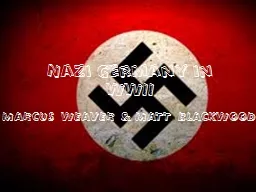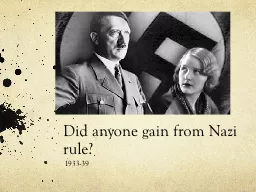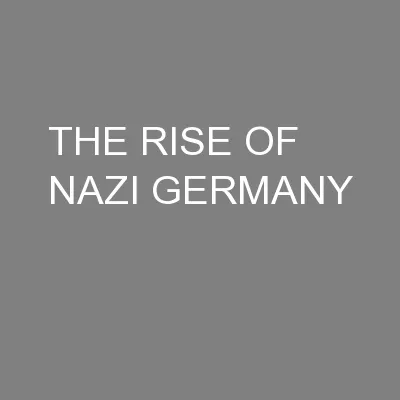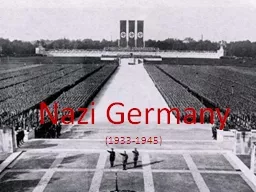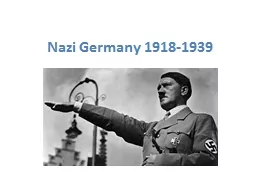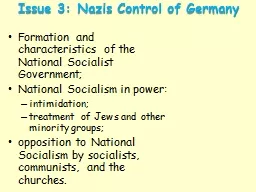PPT-Nazi Germany in WWII
Author : kittie-lecroy | Published Date : 2016-06-27
MARCUS WEAVER amp MATT BLACKWOOD Nazi G ermany Nazi Germany and the Third Reich are common names for Germany during the period from 1933 to 1945 when its government
Presentation Embed Code
Download Presentation
Download Presentation The PPT/PDF document "Nazi Germany in WWII" is the property of its rightful owner. Permission is granted to download and print the materials on this website for personal, non-commercial use only, and to display it on your personal computer provided you do not modify the materials and that you retain all copyright notices contained in the materials. By downloading content from our website, you accept the terms of this agreement.
Nazi Germany in WWII: Transcript
Download Rules Of Document
"Nazi Germany in WWII"The content belongs to its owner. You may download and print it for personal use, without modification, and keep all copyright notices. By downloading, you agree to these terms.
Related Documents

